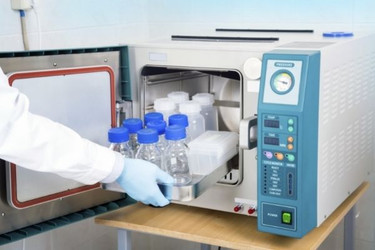Methods of Equipment Sterilization Used in Laboratories
Oct 19th 2021
While a clean work environment is always important, no profession requires it more than scientific and medical work. Sterile laboratories and laboratory equipment allow researchers to perform their jobs safely and accurately. That’s why scientists and medical professionals use a handful of intense cleaning techniques before or after using certain tools. Explore these crucial methods of equipment sterilization used in laboratories with this guide.
Heat Sterilization
Extremely high temperatures kill organisms like microbes, spores, and viruses, making heat an effective and reliable sterilization method. Lab workers have several ways they can use heat to sterilize equipment, including flaming, boiling, and incineration. However, the most common methods are through wet heat (steaming) or dry heat (baking).
Steam Sterilization
Wet heat sterilization, also known as steam sterilization or autoclaving, uses pressurized steam to heat and sterilize the equipment. Professionals place tools inside an autoclave steam sterilizer, which then heats the equipment with steam that reaches temperatures of 121 to 134 degrees Celsius. The high latent heat of the pressurized steam allows the heat to penetrate dense materials for a deep, thorough sterilization every time.
Dry Heat Sterilization
Dry heat takes longer than wet heat to penetrate a sample and destroy the microbes within. For this reason, dry heat methods like baking use even higher temperatures than wet heat sterilization. A hot air oven is a great sterilization method for samples that you can’t expose to moisture, such as powder samples. Baking also works well for some metal devices or glassware.
Filtration
Filtration is one of the most efficient methods of equipment sterilization used in laboratories. Lab workers pour the sample—usually a liquid—through a filter with pore diameters that are too small for microbes to pass through. While this is an effective method against bacteria, viruses and other smaller contaminants can still pass through the filters.
Radiation
Radiation sterilization uses UV rays, X-rays, and gamma rays to destroy contaminating organisms. UV rays have a more limited range, so they work well with smaller samples or sections of equipment. Meanwhile, X-rays and gamma rays are great for larger-scale sterilization.

